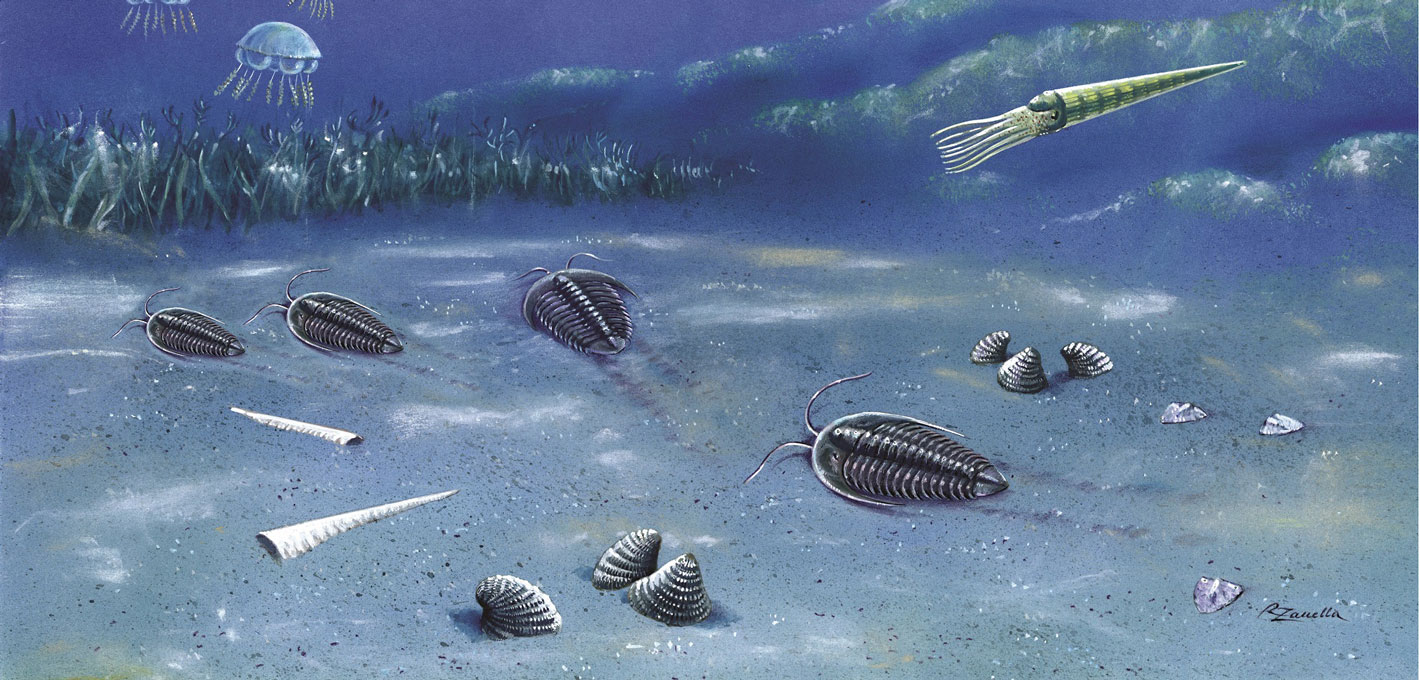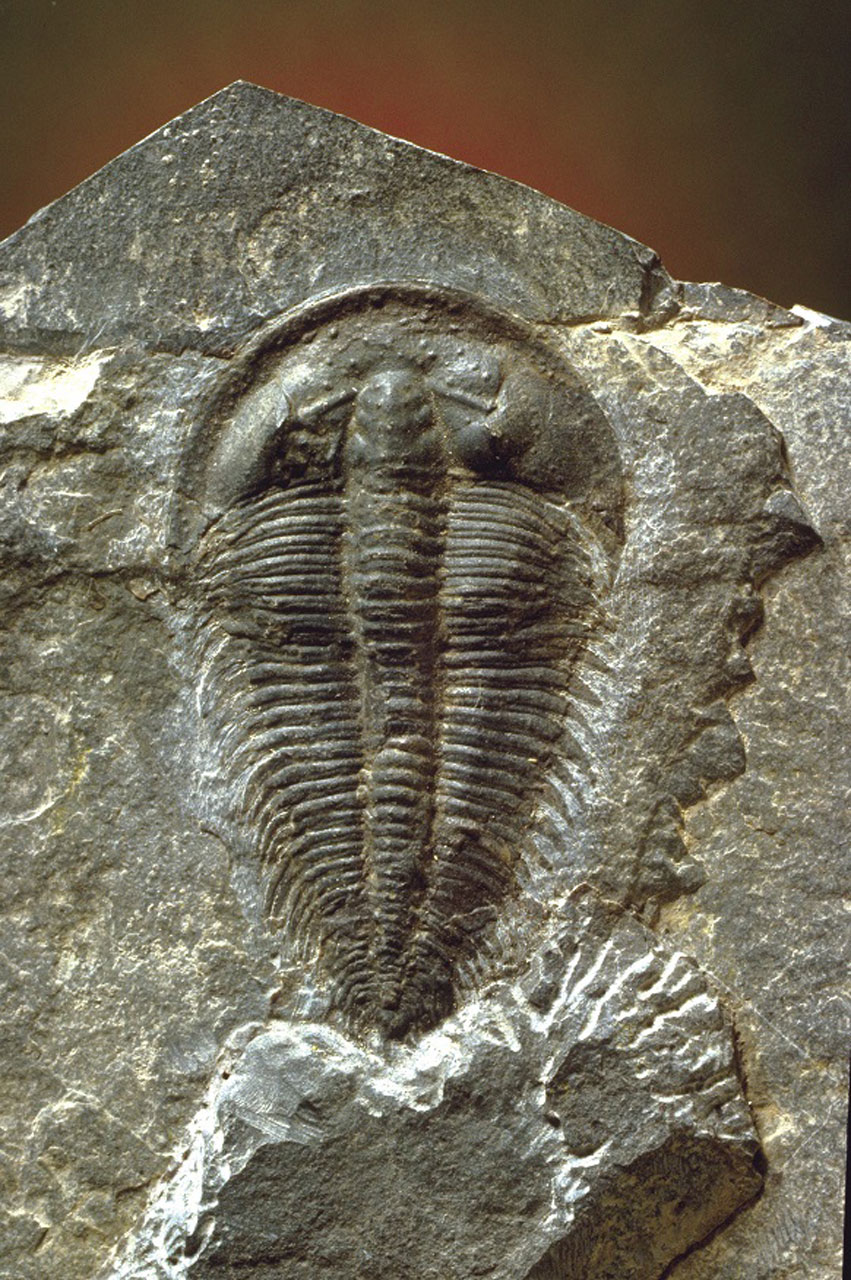Paleozoic Era: Silurian
BackAt the beginning of the Silurian (from 444 to 416 million years ago) the sea that covered the Carnic area deepened due to the gradual melting of the ice and the consequent raising of the sea level. In this sea deeper basins were formed.
Characteristic of these basins are unusual, very black layers, which may be subdivided into thin sheets that at times are rich in graptolites. In the other marine areas Orthocerids, Bivalves Gastropods, Brachiopods and Trilobites are common.
Towards the end of the Silurian the sea level begins to lower once again. Grey limestones formed in shallow waters, now outcropping in the area of Mount Zermula, rich in tetra- and tabulate corals, testify to this lowering. Silurian rocks, mainly black and reddish limestones, also emerge, particularly along the Italian-Austrian border. Those present in the Creta di Collinetta and in the area of the Passo di Volaia are particularly rich in fossils.


